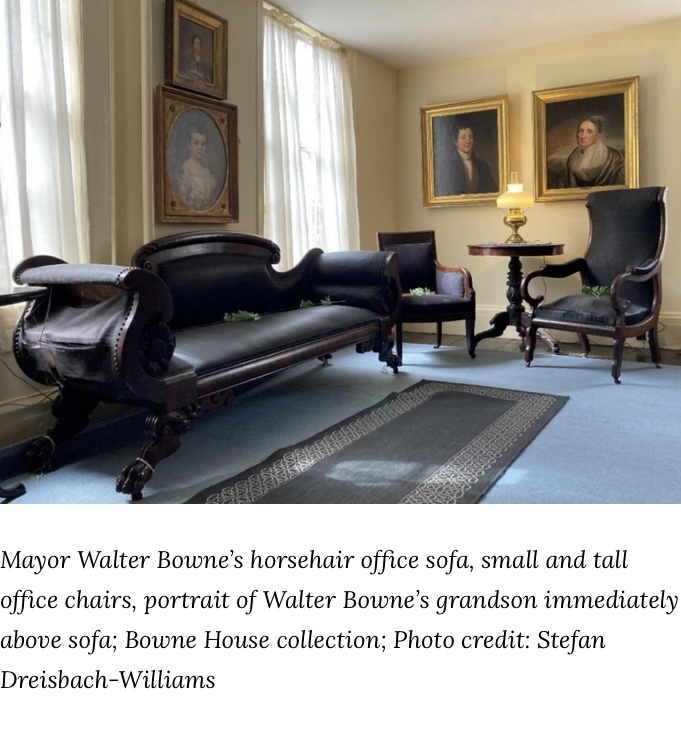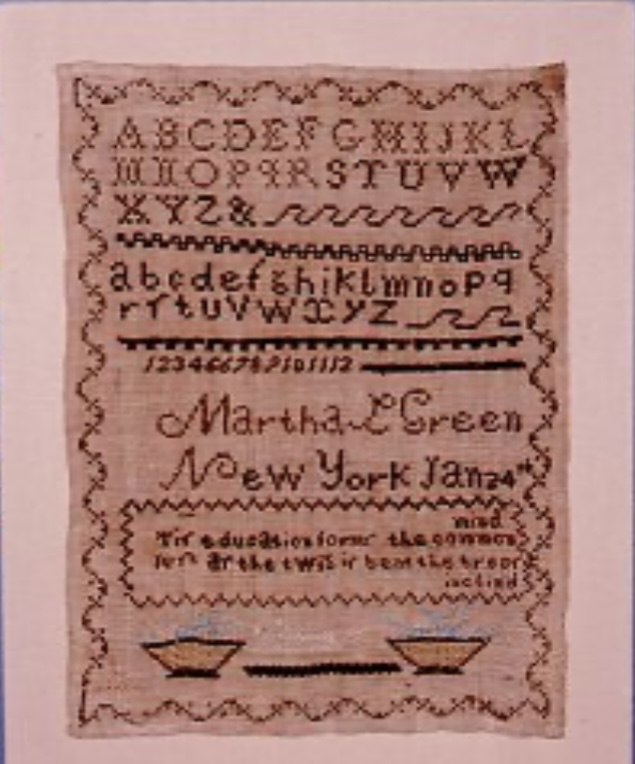
By Nova M Bajamonti
The Anglo-Dutch Bowne House, which was built around 1661, has received the New York State Council on the Arts/ Greater Hudson Heritage Network’s grant to help conserve its historical textiles.
The Bowne House will be sharing the $65,000 textile assessment funding with ninety-three organizations that represent thirty-eight countries.
The landmark is Queens’ oldest property, and has been awarded the grant for its eighteen pieces of textiles that underwent a one half-day profession assessment.
South Salem’s Textile Conservation Workshop, Inc., which has been assessing textiles since 1978, oversaw the on-site testing of the museum’s textiles.
According to the Bowne House’s website, the vice-president of the museum’s board of trustees, Rosemary S. Vietor shared her response to the celebratory news, and stated: “Bowne House is grateful for NYSCA/GHHN funding enabling a part of our collection of rare American samplers to be assessed professionally for future conservation.
“The museum staff professionally caretakes an extraordinary collection of textiles, furniture, fine and decorative arts, and English and American ceramics owned, and used by members of the Bowne family, for more than three hundred years.
“NYSCA/GHHN funding is critical to the maintenance of this large and important collection.”

Screenshot
The Bowne House’s collection volunteer Ellen Spindler, who wrote the grant application, has shared the process of conserving the museum’s textiles and the house itself, with the Queens Ledger and explained: “The Bowne House Historical Society owns the museum’s collections, including textiles and archives, and operates the museum, while the City owns and maintains the actual house and land.
“Textiles are conserved as funds [and] are available through grants and other fundraising efforts.
“They are stored in specialty boxes with acid-free tissue or Tyvek, in accordance with the conservator’s recommendations.
“We have long hoped for a visitor’s center where we can both store and display our textiles under ideal conditions.”
Ellen explained the important story behind some of the museum’s textiles and shared: “All of our textiles are significant. For example, we have several samplers sewn by former Bowne House residents like Eliza Bowne and Mary B. Parsons.
“These include eighteenth and nineteenth century samplers crafted at some of the earliest young ladies’ academies, and co-ed boarding houses after the Revolutionary War, like the Nine Partners’ Quaker boarding school in upstate New York.
“Some of the samplers have texts taken from poems, or other moral or literary references, which show the style of learning utilized to teach young girls literacy. There is clothing in the collection also associated with former Bowne and Parsons’ residents.”

Screenshot
This isn’t the first grant that the museum has been awarded. The property has also received the financial award to help maintain its 1909 painting created by Edwin B. Child, that featured Mrs. Robert Bowne Parsons, as well as a grant to help maintain a 19th century black doll.
The grant program provides three application options for organizations seeking financial assistance.
Organizations can annually apply for all three opportunities, which include the conservation treatment (maximum award is up to $7,500), preservation supplies (maximum award is up to $650), and site assessment (maximum award is up to $1,000).
The conservation treatment focuses on helping preserve historical items.
The preservation supplies award provides economical help for organizations interested in purchasing supplies to maintain its collections.
The site assessment grant includes step-by-step guidance alongside a collections consultant to figure out how a museum can alter its storage to best maintain its precious items.
The Bowne House has been standing tall for more than 300 years, and has been occupied by many generations of the same family, starting with John Bowne, who built it in 1661.
Many of the family members were heavily involved in activism in support of abolition, and the property is the only house in all of Queens that participated in the National Underground Railroad’s Network to Freedom.
Ellen explained: “This research started with the discovery of a letter in the archives dated September 28, 1850, from a known anti-slavery minister Simeon Jocelyn, appealing to a Bowne House resident William B. Parsons, to assist in harboring a freedom seeker. Further research discovered other letters, obituaries, and supporting documentation.”
Ellen shared that many of the visitors who take a tour of the museum, “are often surprised to learn how Quakers were in the vanguard of the anti-slavery movement in the eighteenth and nineteenth centuries, and the extent of Underground Railroad activities documented so far, as having occurred in Flushing and Long Island.”
She added: “Many [visitors] may also not be aware of the family’s participation in the Free School movement, including efforts made by Bowne, and Parsons women to educate indigent young girls, and black youth, by helping to form the Flushing Female Association, and New York Female Association – both using samplers, in part, as a fundraising tool, to operate their schools.”
The Bowne House offers guided tours, educational programs and many events, which can be viewed on its website.


